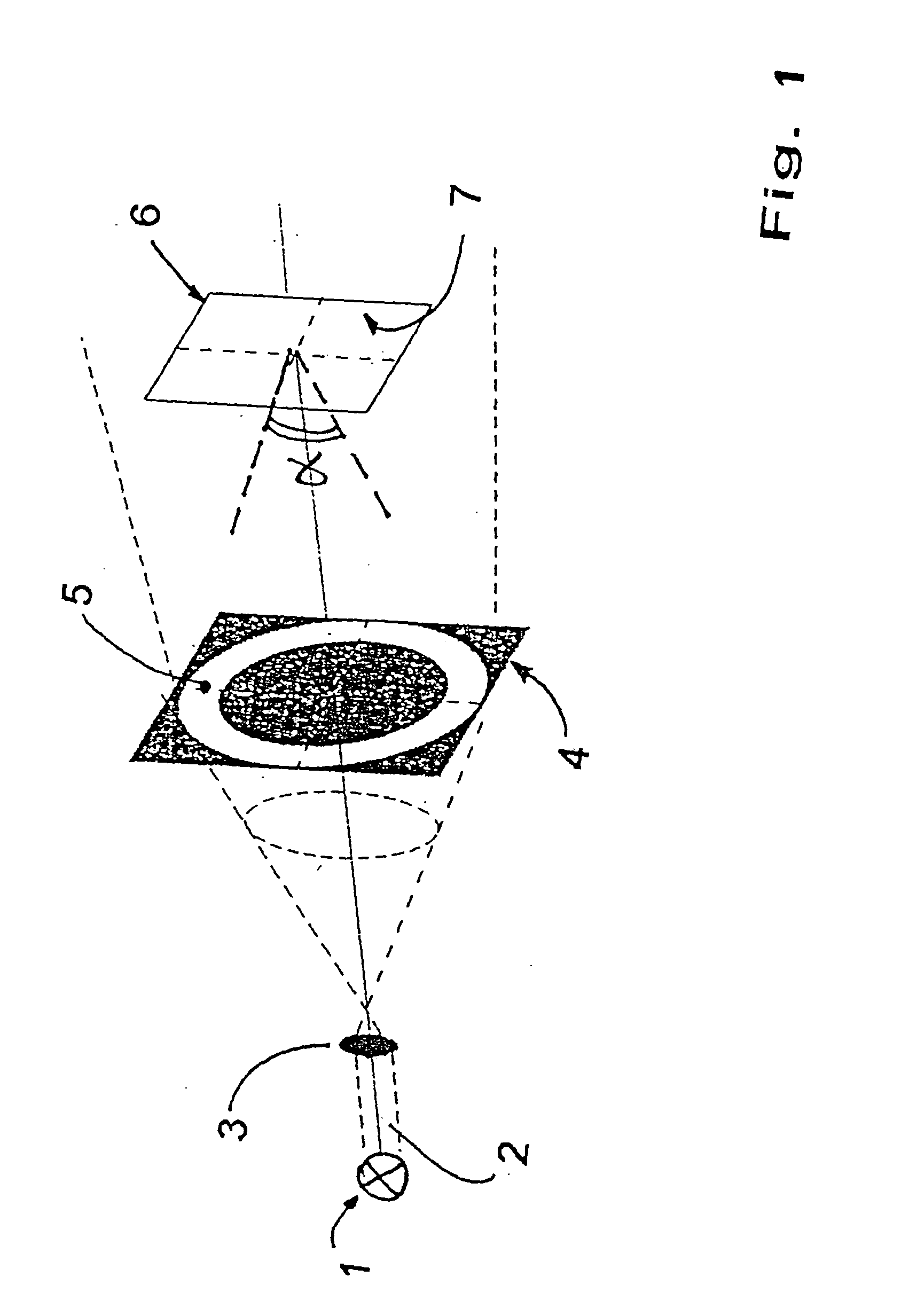Method and device for producing an optically antireflective surface
a technology of anti-reflective surface and optical surface, which is applied in the direction of microlithography exposure apparatus, mirrors, instruments, etc., can solve the problems of hemispherical reflection, i.e., the most favorable case of increased hemispherical reflection, and achieve the effect of improving the achievable exposure results
- Summary
- Abstract
- Description
- Claims
- Application Information
AI Technical Summary
Benefits of technology
Problems solved by technology
Method used
Image
Examples
Embodiment Construction
[0029] FIG. 1 shows an radiation setup having a light source 1, preferably an excimer laser, for example an Ar-ion laser, which emits a coherent light beam 2. A lens 3, which widens the light beam 2 to a diffuser unit 4 which provides an optically diffuse acting, transparent ring region 5 and is otherwise designed opaque, is provided in the beam path downstream of the light source. In the beam path downstream of the diffuser unit 4, a supporting plate 6 is provided on which a photoresist coat 7 is applied.
[0030] The single waves coming from the diffuser unit 4 interfere on the side facing away from the light source in such a manner that partial waves from opposite sectors of the diffuser unit, preferably designed as a ring diffuser, form a large angle .alpha., determined by the geometric measurements of the ring region 5 and the distance between the diffuser unit 4 and the supporting plate 6. Due to the given geometry, mainly light waves impinge upon the photoresist coat 7, which fo...
PUM
| Property | Measurement | Unit |
|---|---|---|
| transparent | aaaaa | aaaaa |
| Wavelengths | aaaaa | aaaaa |
| angle | aaaaa | aaaaa |
Abstract
Description
Claims
Application Information
 Login to View More
Login to View More - R&D
- Intellectual Property
- Life Sciences
- Materials
- Tech Scout
- Unparalleled Data Quality
- Higher Quality Content
- 60% Fewer Hallucinations
Browse by: Latest US Patents, China's latest patents, Technical Efficacy Thesaurus, Application Domain, Technology Topic, Popular Technical Reports.
© 2025 PatSnap. All rights reserved.Legal|Privacy policy|Modern Slavery Act Transparency Statement|Sitemap|About US| Contact US: help@patsnap.com


